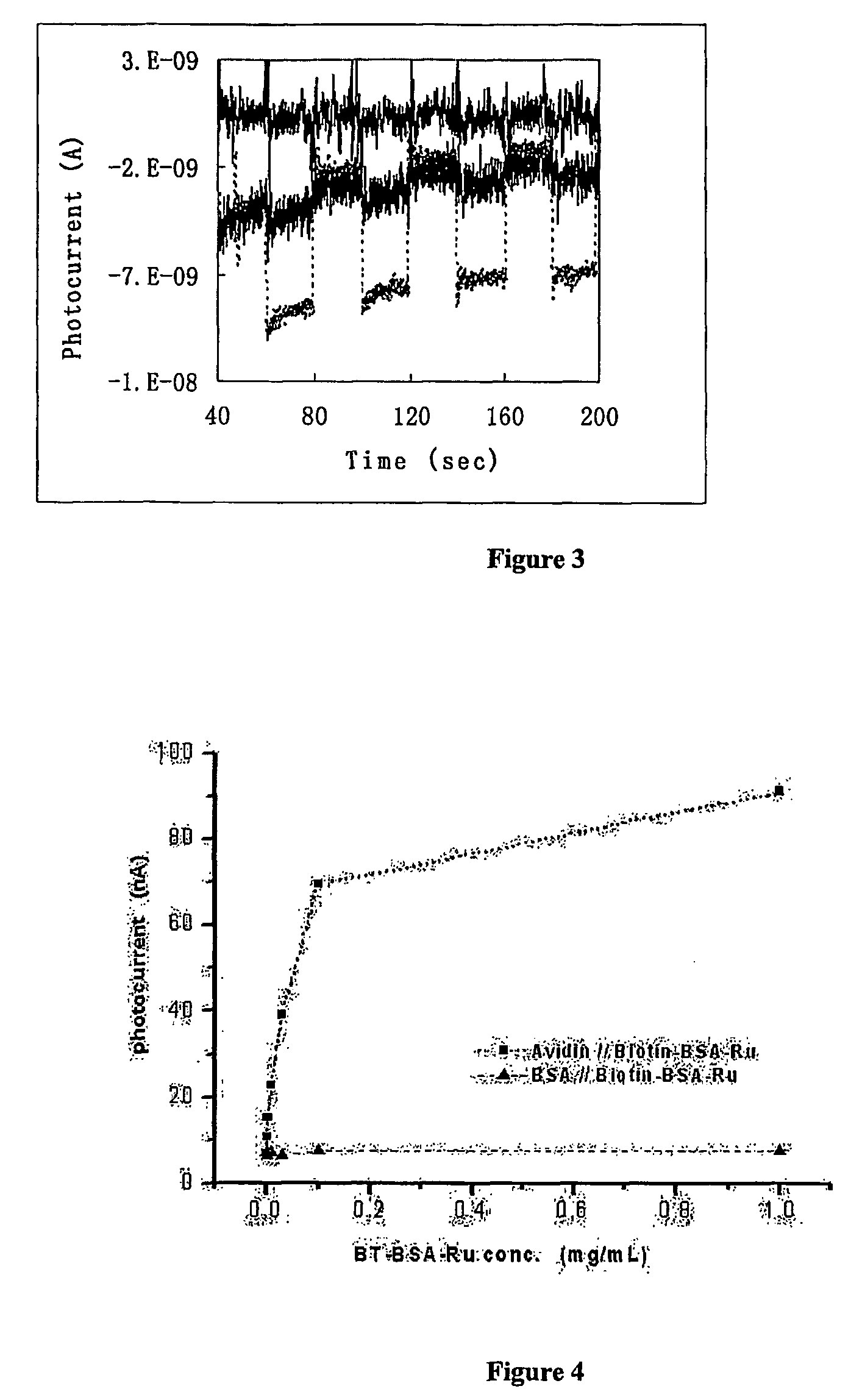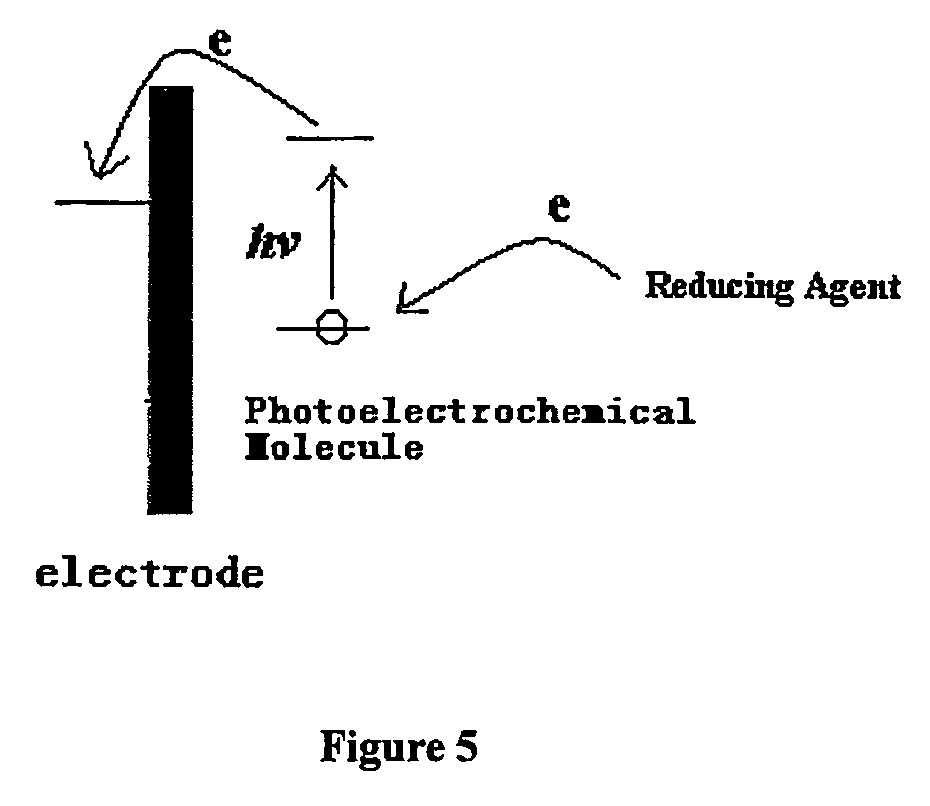Methods for assaying analytes using photoelectrochemical labels
a technology of photoelectrochemical labels and apparatus, applied in the direction of assay labels, instruments, material analysis by optical means, etc., can solve the problems of inability to use radioactive labels in homogenous methods, high cost, and high cost, and achieve easy control, low background interference, and reduced instrument cost
- Summary
- Abstract
- Description
- Claims
- Application Information
AI Technical Summary
Benefits of technology
Problems solved by technology
Method used
Image
Examples
example i
Preparation of Nanocrystalline Titanium Dioxide Paste
[0097]Tetrabutyl titanate was added dropwise into pH 1 water (adjusted with nitric acid) while stirring to obtain a yellow solution. The solution was stirred further after all tetrabutyl titanate was added. Its temperature was raised to 80° C. and kept constant. The solution changed to milk white. 50 mL of the solution was taken out, put into a quartz beaker, and autoclaved at 230° C. for 12 h. The titanium dioxide (TiO2) nanoparticles produced above were dispersed by ultrasonication, and mixed with 40% carbon wax for 24 h to obtain TiO2 paste.
example ii
Preparation of Ruthenium Poly-Pyridine Adsorbed Titanium Dioxide Electrode
[0098]A layer of TiO2 was spread on an ITO conducting glass by the doctor blade technique. After drying, the film was heated in air at 450° C. for 30 min, and then cooled to 80° C. The electrode was immediately immersed in a 1 mM solution of ruthenium poly-pyridine in absolute ethanol, and soaked for 10 h in dark. Excess ruthenium poly-pyridine was rinsed off with ethanol.
example iii
Photocurrent Measurement
[0099]Photocurrent was measured on a CHI 800 electrochemical analyzer using the time-based mode. The light source consisted of a 500 W Xe lamp and a monochromator. The rectangular photoelectrochemical cell was made of polished glass, and had a Pt flag counter electrode, and a Ag / AgCl reference electrode. Light beam entered the cell perpendicular to the cell wall, and hit the TiO2 electrode on its backside. Light was turned on and off by manually dialing the wavelength selector between the desired wavelength and 800 nm (where ruthenium poly-pyridine did not absorb light).
[0100]In FIG. 1, a TiO2 film electrode adsorbed with ruthenium tris-(4,4′-dicarboxyl-2,2′-bipyridine) was placed in the photoelectrochemical cell containing 10 mM hydroquinone / phosphate buffer. Monochromator selector was dialed to 470 nm at every 20th second, and to 800 nm at every 40th second. The broken line is for the electrode adsorbed with ruthenium tris-(4,4′-dicarboxyl-2,2′-bipyridine),...
PUM
| Property | Measurement | Unit |
|---|---|---|
| pH | aaaaa | aaaaa |
| temperature | aaaaa | aaaaa |
| wavelength | aaaaa | aaaaa |
Abstract
Description
Claims
Application Information
 Login to View More
Login to View More - R&D
- Intellectual Property
- Life Sciences
- Materials
- Tech Scout
- Unparalleled Data Quality
- Higher Quality Content
- 60% Fewer Hallucinations
Browse by: Latest US Patents, China's latest patents, Technical Efficacy Thesaurus, Application Domain, Technology Topic, Popular Technical Reports.
© 2025 PatSnap. All rights reserved.Legal|Privacy policy|Modern Slavery Act Transparency Statement|Sitemap|About US| Contact US: help@patsnap.com



